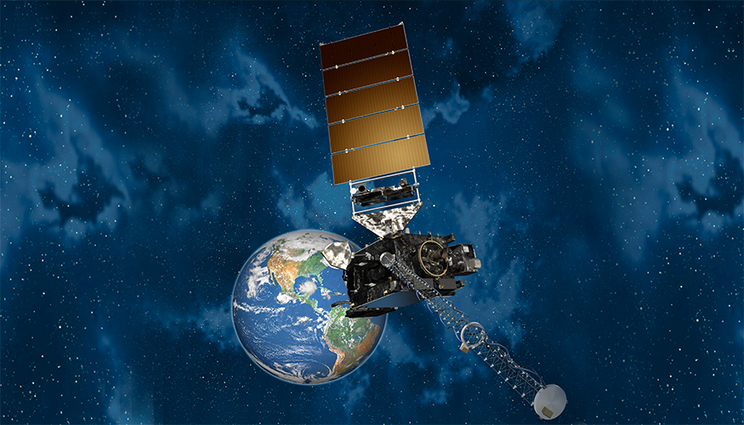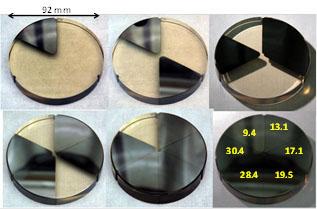Lab technology on board space weather monitoring satellite
 (Download Image)
The GOES-R weather monitoring satellite with Earth in the background. Image courtesy of NASA.
(Download Image)
The GOES-R weather monitoring satellite with Earth in the background. Image courtesy of NASA.
Lawrence Livermore National Laboratory (LLNL) scientists and collaborators have developed a key technology for one of the instruments that are flying on board the next generation of Geostationary Operational Environmental Satellites (GOES), as part of the National Oceanic and Atmospheric Administration (NOAA)’s space weather monitoring fleet launched late last month.
GOES-R is the latest in the suite of GOES weather forecasting satellites, operated since 1975 by NOAA and NASA. GOES-R includes six instruments, two of which are observing Earth (baseline imager and lightning mapper) and four are observing space (magnetometer, Extreme Ultraviolet (EUV)/X-ray irradiance sensor, space environment suite and solar ultraviolet imager (SUVI)). The GOES-R satellite will revolutionize weather forecasting: it will produce advanced imaging that will significantly improve the detection and observation of environmental phenomena that directly affects public safety, protection of property and the nation’s economic health and prosperity.
The LLNL team developed multilayer mirrors for the SUVI instrument aboard GOES-R. SUVI will help scientists better understand the solar-terrestrial environment and the impact of EUV radiation on Earth’s global weather and climate.
LLNL researchers Regina Soufli, Jeff Robinson, Eberhard Spiller, Sherry Baker and Jay Ayers, in collaboration with Lawrence Berkeley National Laboratory scientists and vendors RXO LLC, L3 Communications–Tinsley and Lockheed Martin, led the development and calibration of the multi-layer-coated mirrors for the SUVI instrument. It consists of a Cassegrain-type, two-mirror telescope, imaging the sun at six different EUV wavelengths, ranging from 9.4 - 30.4 nanometers.
This type of solar imager is included for the first time on a Geostationary Operational Environmental Satellite. Most importantly, this is the first time six different EUV narrow-band channels have been included on a single mirror (or telescope). Each mirror had to be coated in six different segments, with one segment coated at a time.
“LLNL advanced multilayer deposition and masking techniques enabled this scheme by minimizing the overlap (or “dead”) area between coated segments, thus greatly increasing the effective area of the telescope,” said Soufli, the LLNL principal investigator on the project.
The SUVI development and calibration took place at LLNL from 2007-2012. At the end, the team calibrated 72 multilayer coatings on 12 flight mirrors and 144 flight witness samples for six telescopes. In addition to GOES-R, telescopes from this set are scheduled to be installed on GOES-R’s successors: GOES-S, -T and –U, which will be operational through 2036. This project was sponsored by Lockheed Martin Corporation.
Contact
 Anne M. Stark
Anne M. Stark
[email protected]
(925) 422-9799
Related Links
LLNL multilayer mirrors fly on NASA’s Solar Dynamics ObservatoryNational Oceanic and Atmospheric Administration
The sun in all its splendor
Lab scientist receives NASA award for the Solar Dynamics Observatory mission
Related Files
DownloadTags
Space Science InstitutePhysical and Life Sciences
Featured Articles








